Inside Doshi Levien’s world of colour
Doshi Levien's ‘Kinari’ collection for Galerie Kreo – named ‘Best Colour Study’ in the Wallpaper* Design Awards 2024 –exemplifies the studio’s chromatic deep dive
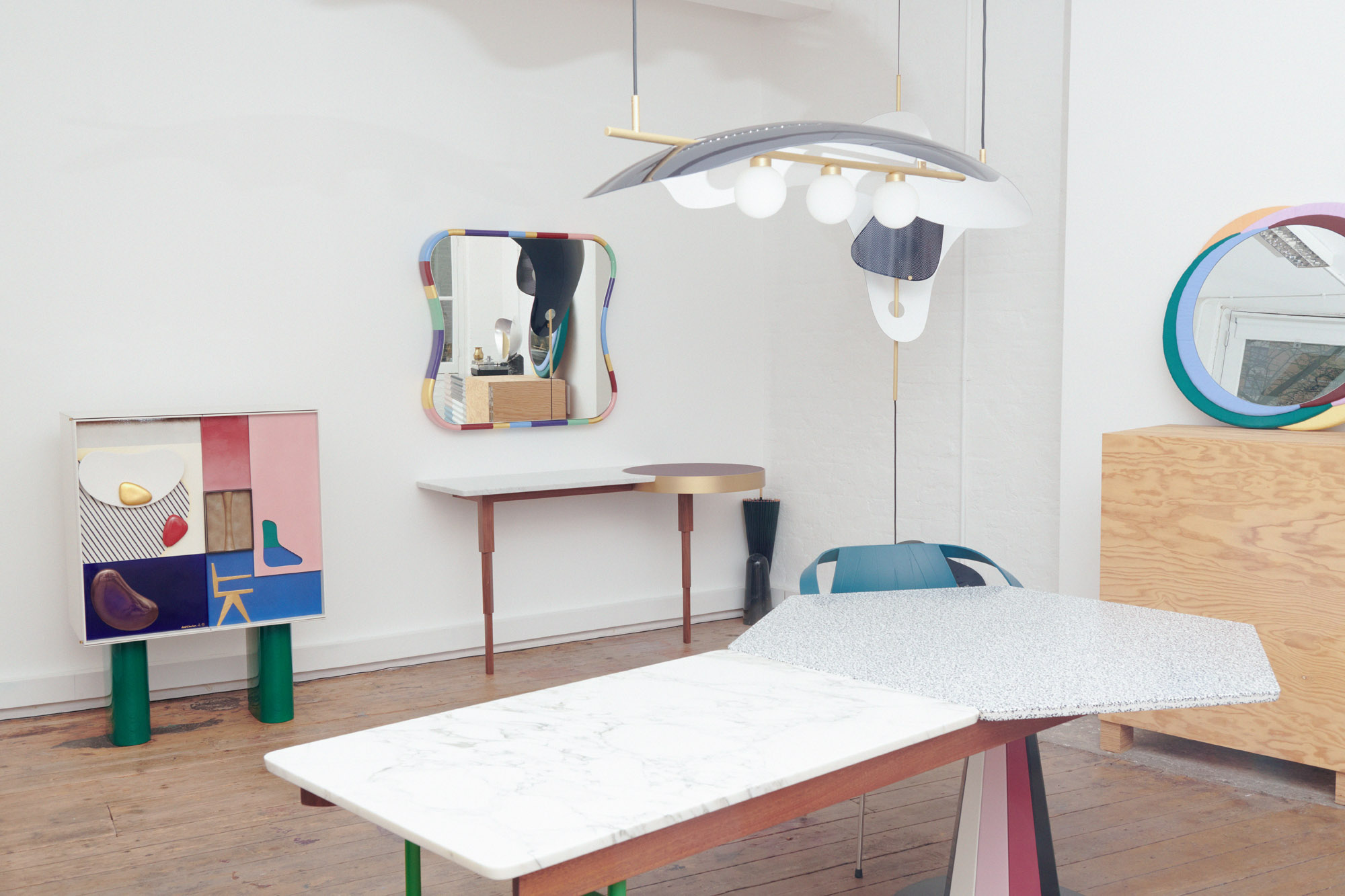
The sun’s warm winter glow is piercing the windows of Doshi Levien’s east London studio – a former 19th-century furniture workshop on Columbia Road. It’s shining on nearly 400 colour samples that the design duo – Nipa Doshi and Jonathan Levien – have been blending with their team. Experimentation and research are at the heart of their colour laboratory, and the two white coats hanging in one corner, peppered in paint splatters, are evidence of how this arm of the practice remains key.

Nipa Doshi and Jonathan Levien in their studio with a mirror from the ‘Kinari’ collection
Rays of sunshine now hit a mirror with a multicoloured frame, one part of Doshi Levien’s five-piece ‘Kinari’ collection for Galerie Kreo, produced in a limited edition of 12. 'To get one [shade of] pink, we had to have five pinks that we mixed,' Doshi explains of achieving a particular hue in the framework. Creamy purple against red is a colour clash that works. 'I think it is important to work with colours that you think are ugly,' says Doshi.
‘Kinari’ translates from Hindi as ‘border’, and it was the edge of a sari that inspired the curvaceous edges of the collection, a nod to Doshi’s Indian heritage.
‘My mum had saris from different parts of the country. From Banarasi brocade to block-printed saris, I just had to look at my mum’s collection and was exposed to different colours and textiles techniques,' she says. It gave her a knowledge of textiles, even though she hadn't studied them.
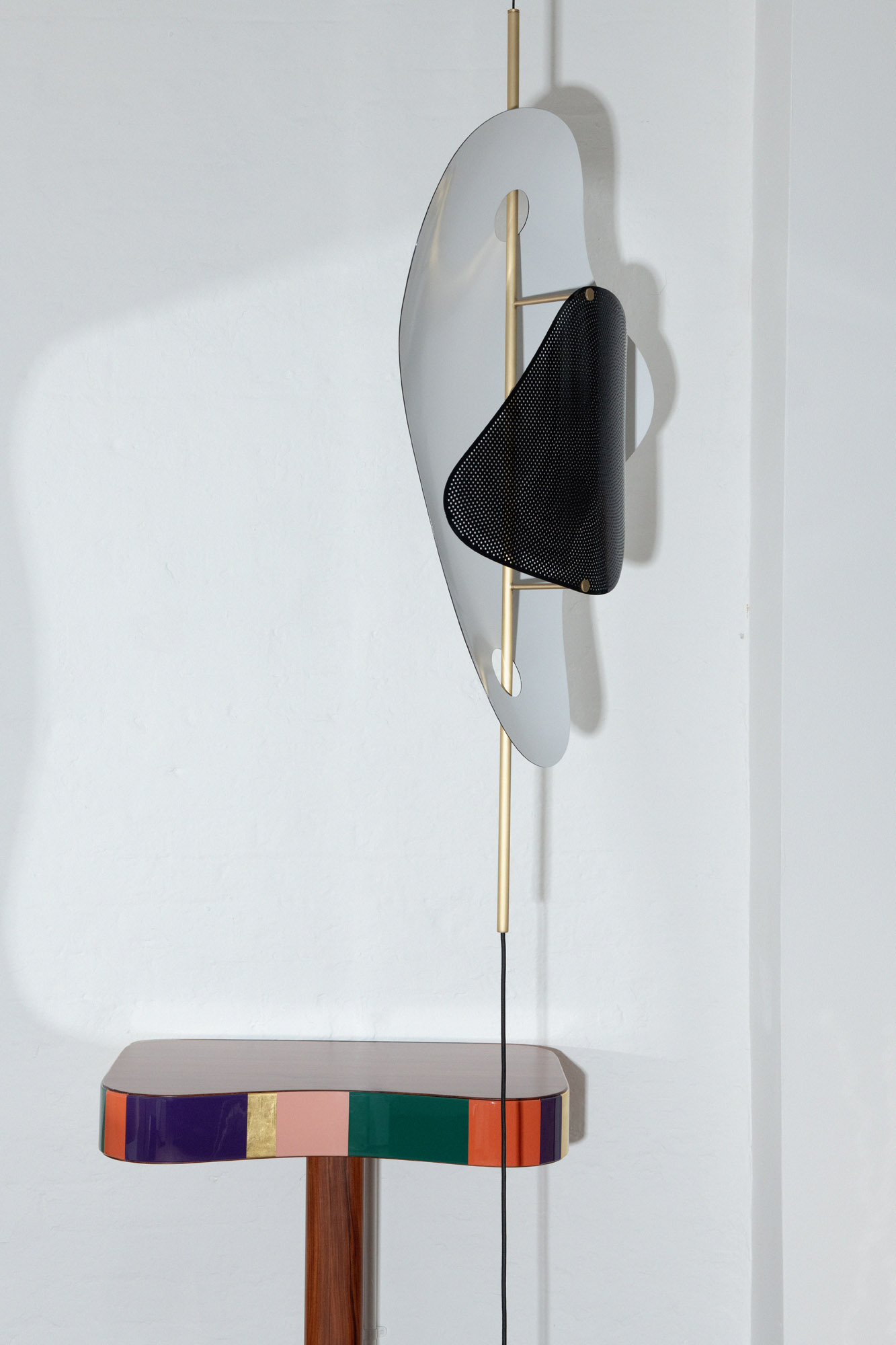
The 'Kinari' console with one of the studio's 'Earth To Sky' light sculptures
The process of realising the ‘Kinari’ collection started with Doshi drawing in colour, and then Levien making full-sized cardboard models of the pieces – the mirror, a console, bedside cabinets, coffee tables and a long side table. 'This is when we try and figure out the sequence and proportion of colours,' says Levien as he presents a maquette of the console, where the palette builds like a film reel.
Doshi was initially reluctant to be seen as a colour designer: 'I thought it was something that women were asked to do.' But colour work comes instinctively. The industrial design practice’s affinity for an colour experimentation was perhaps first uncovered in its 2012 project for Das Haus, an annual display at design fair Imm Cologne. 'It was how you were dressed,' Levien says to Doshi of why he thought they were asked to work with colour and textiles for Spanish brand Kettal. Investigations for Kettal and Danish brand Kvadrat prompted the studio to begin mixing their own shades.
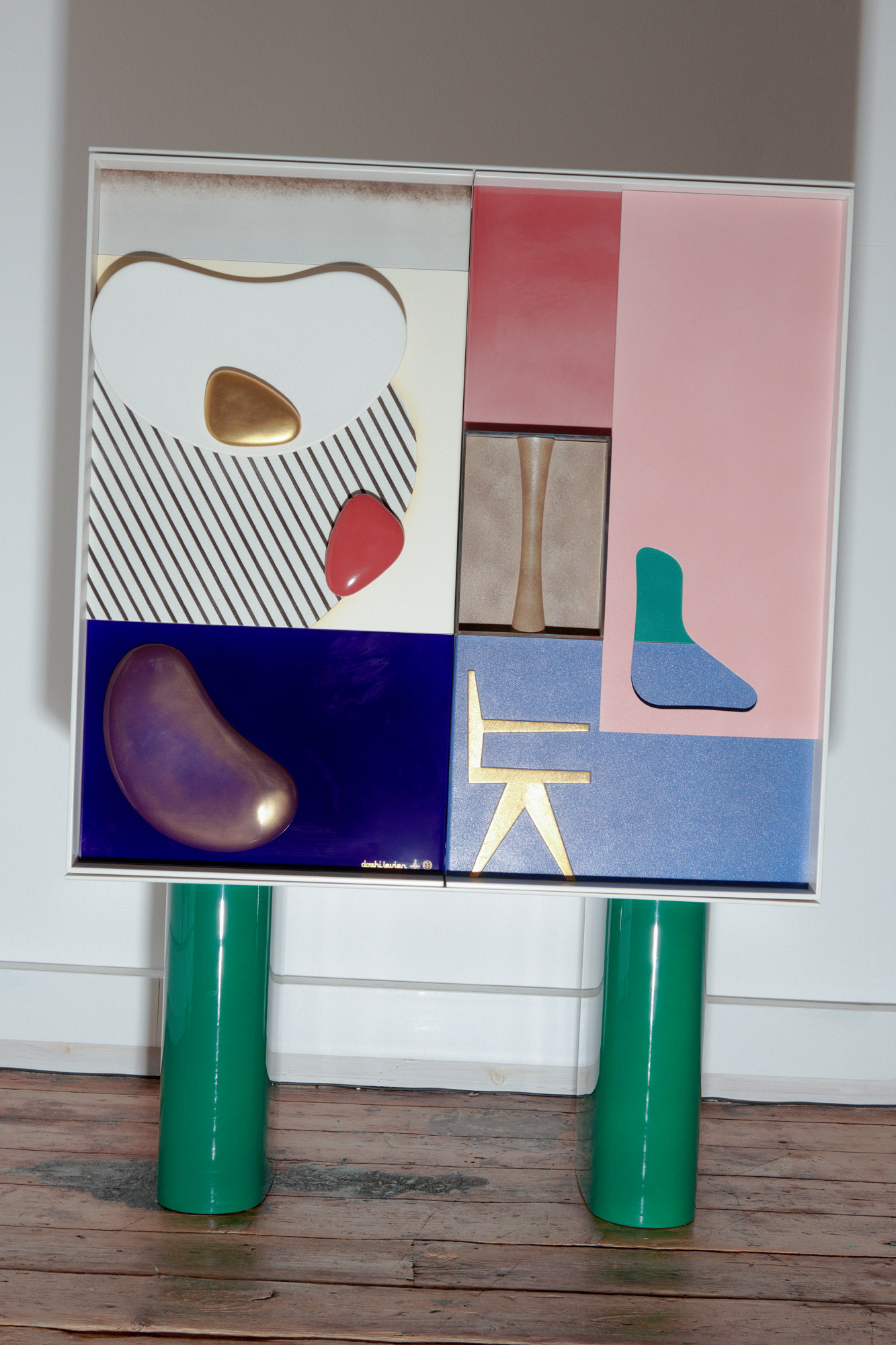
‘Le Cabinet’, part of a series of design objects by Doshi Levien in dialogue with the architecture of India by Le Corbusier
'We would get references and colour-match to the work we were doing,' says Doshi, opening a drawer of perfectly placed objects, from ceramics to textiles, a collage of inspiration that is a cultural combination. There are Indian miniature paintings, Chinese ceramics, Le Corbusier’s paintings and images of the red sandstone of the Jantar Mantar in Jaipur. 'We tried to see what the colour in [a] photograph or ceramic sample [was] and started mixing gouache,' she explains.
Wallpaper* Newsletter
Receive our daily digest of inspiration, escapism and design stories from around the world direct to your inbox.
A collaborative approach is how Doshi Levien has always progressed. The colour lab is a layer of the duo’s industrial design output – working in tandem with the furniture, lighting and objects. 'For me, colour is a material, it's not something you just apply,' Doshi says. Aside from colour, the making of the ‘Kinari’ collection is another cross-cultural collaboration. The wood riffs on the tropical dark woods in the furniture that Doshi grew up around in her grandfather’s house in India. 'These were immaculately crafted,' she recalls. The ‘Kinari’ range was made by a small atelier in France – a meeting of two worlds once again. 'I love the fact that your ideas will be inspired from one culture, but translated by someone in a completely different culture,' adds Doshi.
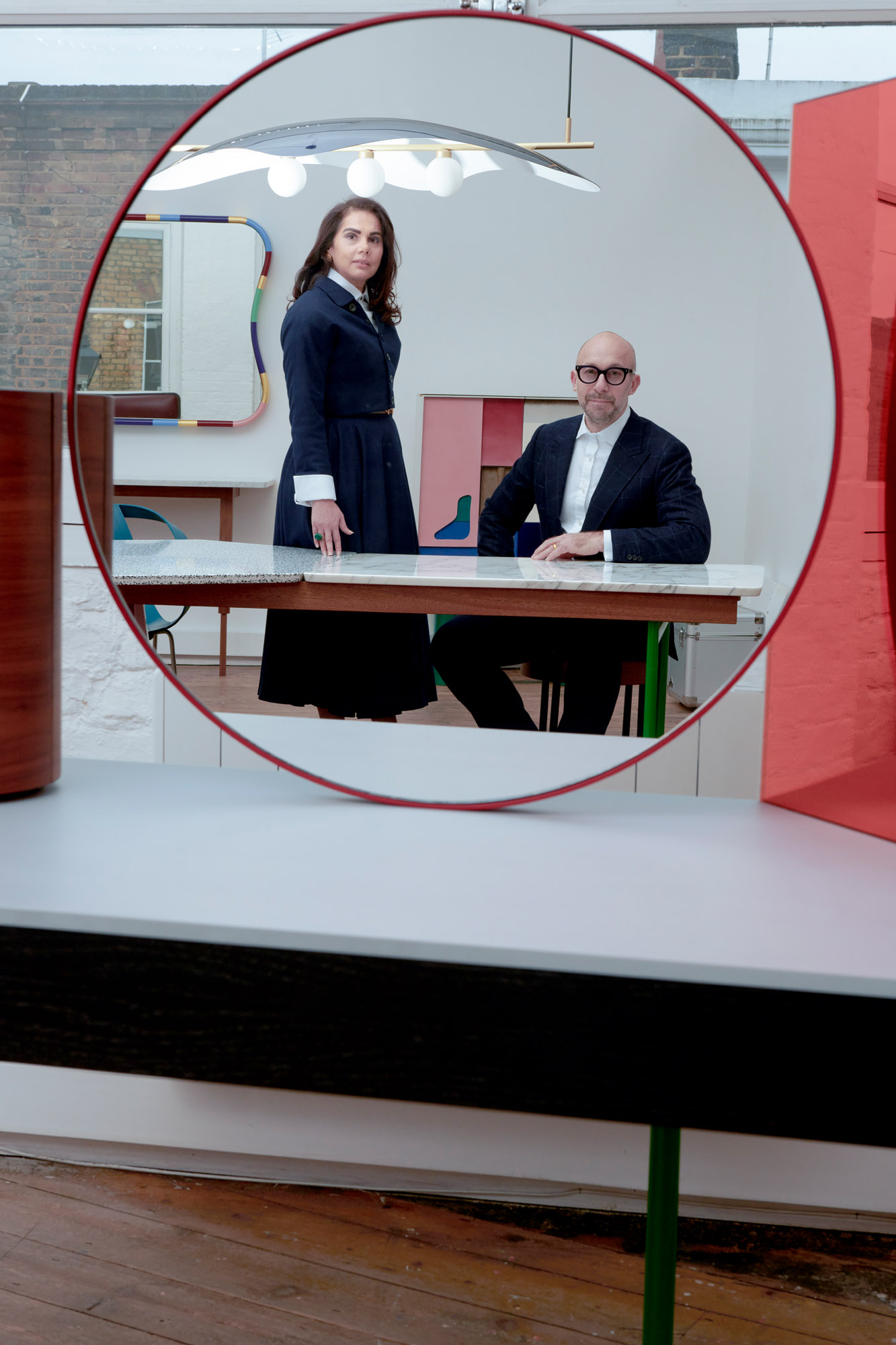
Nipa Doshi and Jonathan Levien with their Chandlo Dressing Table for BD Barcelona, available from 1stDibs
The final ingredient to their colour library, and perhaps the most important, is the cultural collaboration between Doshi and Levien themselves. Doshi’s mind is layering tones constantly, but this is levelled out with Levien’s practicality (we joke he is the ‘colour police’), ensuring accessibility for the studio’s audience.
'An ability to distil the idea and bring it back to its essence' is how Doshi describes Levien’s approach to the work. A natural push and pull from them both informs this unique palette, which Levien says has to always be enjoyable: 'We will work in areas where there is fun to be had. We want it to be joyful.' Essentially, Doshi Levien’s colour universe is a natural concert of influences. Says Doshi, 'We are not trying to bring together cultures, we are different cultures coming together.'
galeriekreo.com
doshilevien.com
A version of this article appears in the February 2024 issue of Wallpaper* – dedicated to the Wallpaper* Design Awards 2024 – available in print, on the Wallpaper* app on Apple iOS, and to subscribers of Apple News +. Subscribe to Wallpaper* today
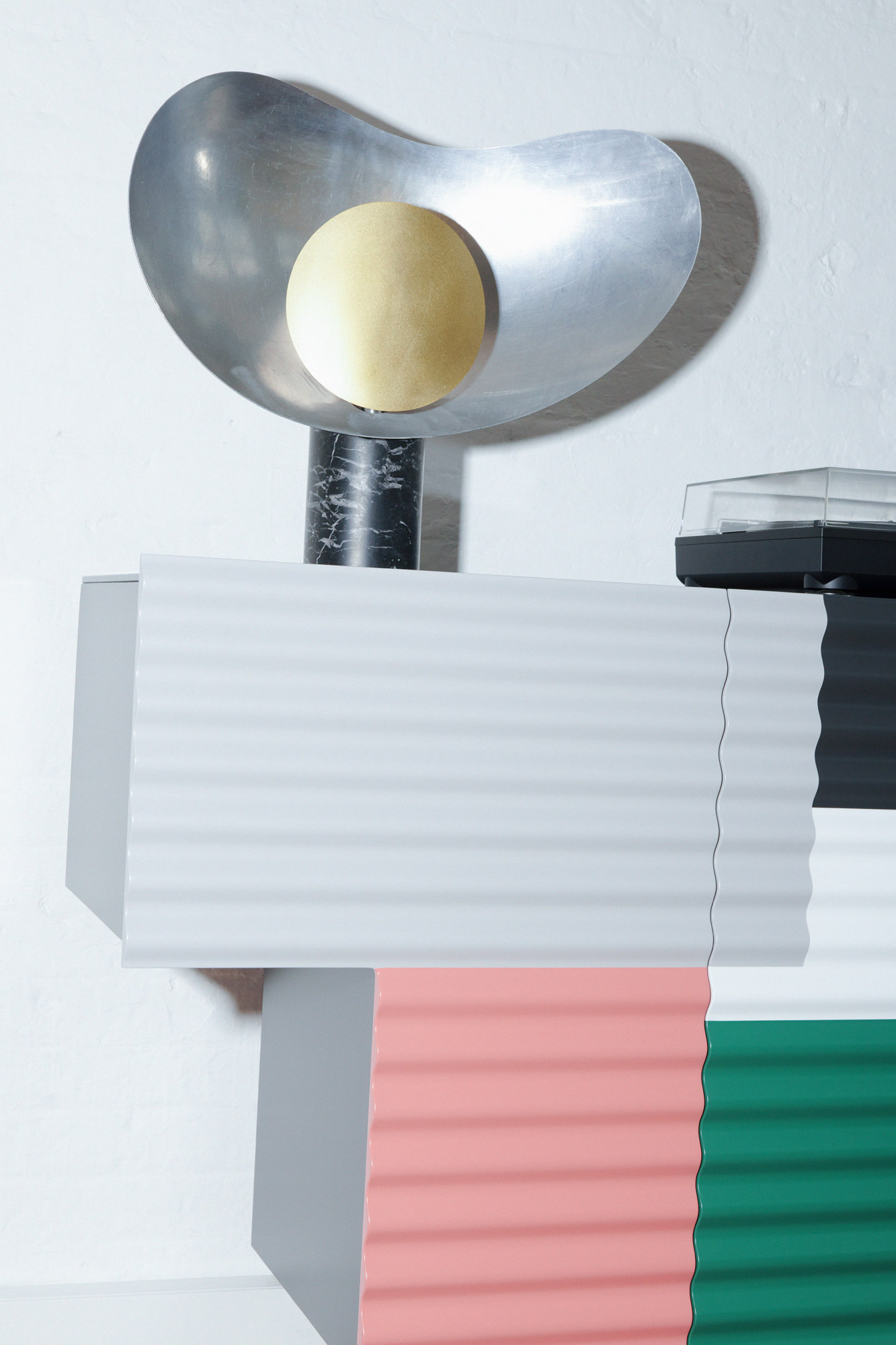
Shanty Cabinet for BD Barcelona, available from 1stDibs, and a light sculpture from the 'Earth To Sky' series
Sujata Burman is a writer and editor based in London, specialising in design and culture. She was Digital Design Editor at Wallpaper* before moving to her current role of Head of Content at London Design Festival and London Design Biennale where she is expanding the content offering of the showcases. Over the past decade, Sujata has written for global design and culture publications, and has been a speaker, moderator and judge for institutions and brands including RIBA, D&AD, Design Museum and Design Miami/. In 2019, she co-authored her first book, An Opinionated Guide to London Architecture, published by Hoxton Mini Press, which was driven by her aim to make the fields of design and architecture accessible to wider audiences.
-
 Put these emerging artists on your radar
Put these emerging artists on your radarThis crop of six new talents is poised to shake up the art world. Get to know them now
By Tianna Williams
-
 Dining at Pyrá feels like a Mediterranean kiss on both cheeks
Dining at Pyrá feels like a Mediterranean kiss on both cheeksDesigned by House of Dré, this Lonsdale Road addition dishes up an enticing fusion of Greek and Spanish cooking
By Sofia de la Cruz
-
 Creased, crumpled: S/S 2025 menswear is about clothes that have ‘lived a life’
Creased, crumpled: S/S 2025 menswear is about clothes that have ‘lived a life’The S/S 2025 menswear collections see designers embrace the creased and the crumpled, conjuring a mood of laidback languor that ran through the season – captured here by photographer Steve Harnacke and stylist Nicola Neri for Wallpaper*
By Jack Moss